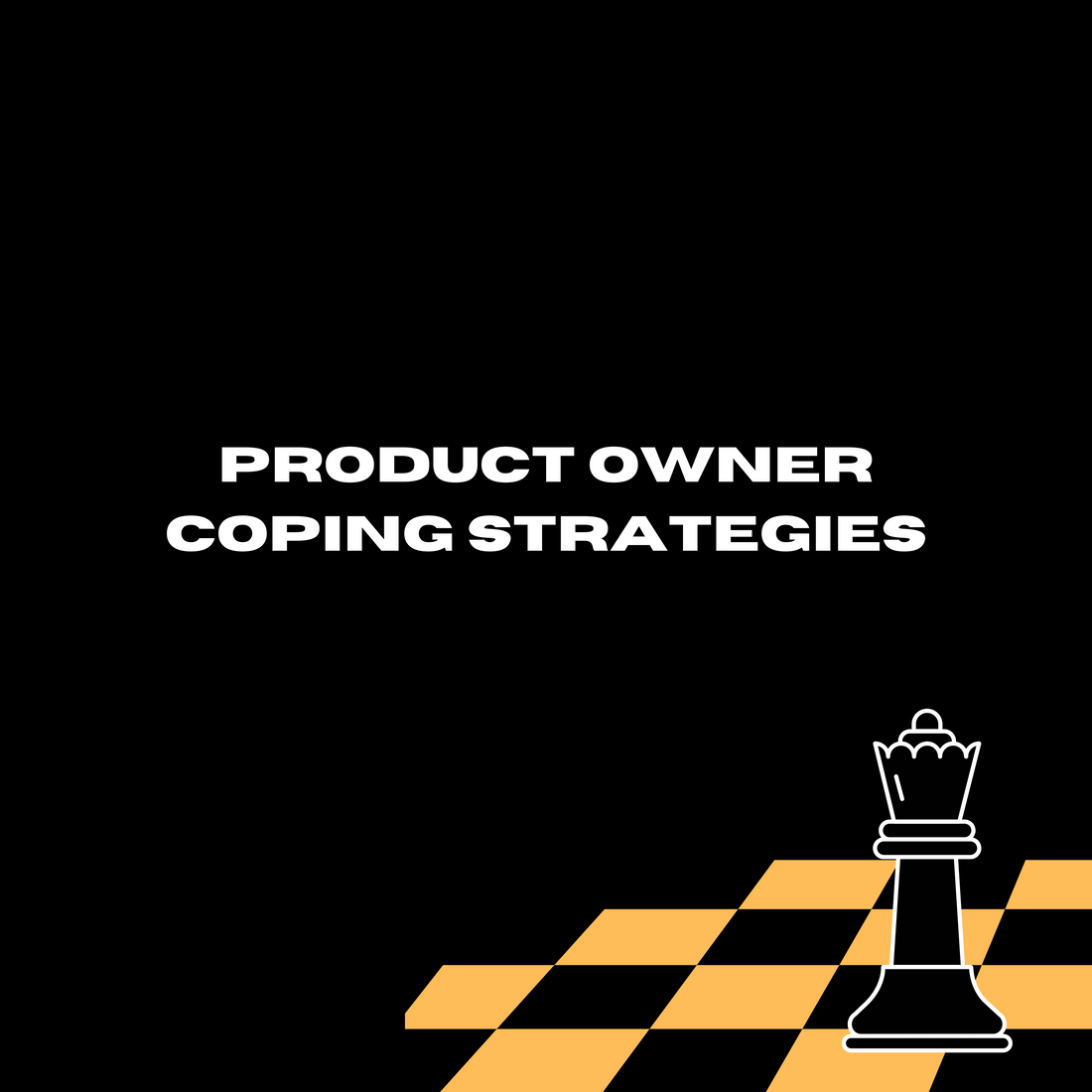
Product Owner coping strategies
Share
In a previous blog post, I talked about different categories of product owners. You can check it out here.
But here’s a summary:
- Scribe — doesn’t add any value, just takes orders.
- Proxy — who maybe doesn’t just take the orders, maybe adds some value in terms of assessing whether what the customer’s asking for is really the right thing to ask for. What problem are you trying to solve? What opportunity are you trying to avail of? It is trying to understand the problem that’s trying to be solved instead of just taking a list of requirements like a scribe would.
- Business representative/organization representative is someone who is more closely connected with the stakeholders within the organization to have more influence.
- Sponsor — has the money.
- CEO of the product (entrepreneurial/intrapreneurial Product Owner)
The Scribe & Proxies concentration
Most product owners in the world are scribes or proxies.
Some of them are also business representatives.
All three of those lack power, although a business representative will have more influence.
So what do you do?
Coping Strategy 1: Become a developer

You could become a developer on a team because in Scrum, for example, there’s only one product owner for a real product.
What is a product?
- Something that an external customer or end-user would recognize;
- They pay for it with their: time, their money, or their data; and
- Somebody consumes it, and somebody produces it.
In the case of a real product, there’s only one product owner. So if you are a team-level product owner within a multi-team product, one thing you can do is become a developer.
The role of Large Scale Scrum (LeSS): Product Owner Helper
Another thing you could do is take a little tip from large scale scrum, LeSS. They have this concept of a product owner helper.
Personal Opinion: We need to do some work on the title cause it’s not very appealing.
Application
The idea is that you might be able to help the product owner across the product so that if all the value is on Vanesa’s team, but you were previously on your own team looking at your filter of the backlog, were working on really low-value work because that’s what your team did instead of learning what was most valuable for the product, what was most valuable for the organization.
If you act as a helper across the product, supporting the product owner, that:
- At least reduces the damage, and it means we still have one product owner;
- The product owner is getting some assistance; and
- You’ve got a view of what’s happening across the entire product.
Coping Strategy 2: Speak now or forever hold your silence meeting

Another coping tactic that I tried a few years ago that was really successful was what I call a ‘speak now or forever keep your silence’ meeting.
It was a situation where the product owner was a proxy. So the first thing I did was I asked for the product owner to be seconded over to the business.
Now, this is in a situation where there was IT and business. You could also have it between supplier and organization, for example.
We asked the product owner to be part of the main organization in terms of where decisions get made and so on.
That helped, but the person still didn’t have power.
The second thing we did we arranged a speak now or forever keep your silence meeting.
What happens during a speak now or forever keep your silence meeting?
The stakeholders were invited to this meeting, and the product owner, with no power, said, this is what I’m planning to prioritize in the next sprint.
Speak now or forever keep your silence; in other words, let’s debate now if you disagree with these decisions. Do not pull the rug from under me during the sprint, saying you disagree with these decisions.
Because as soon as the developers and the team realize that I actually don’t have the right priorities as a proxy, then they’ll just make up their own priorities.
And then we’re all losing.
So the coping tactic would be to have a speak now or forever keep your silence meeting and have the ranging debate within that session.
If the list changed, that’s fine, but at least you come out with a list that has been agreed with all of the stakeholders or agreed with as many as possible cause some stakeholders you can’t agree with, sometimes we need to say no. Do your best to come up with the best set of priorities.
The bottom line
Even though you don’t have power, you just bought power for a couple of weeks because you had a session where you asked people what the right order was, what the right list was, and what the right sequence was.
You came up with the best possible list. That’s a little coping tactic.
Give it a go, and let me know what you think.
Enjoyed this blog? Or perhaps you may have a question? Let’s connect on LinkedIn: https://www.linkedin.com/in/johncolemanagilitychef
Instagram: https://www.instagram.com/johncolemanagilitychef/
If you are looking for scrum or kanban training, check out my upcoming courses at: https://orderlydisruption.com/collections/courses